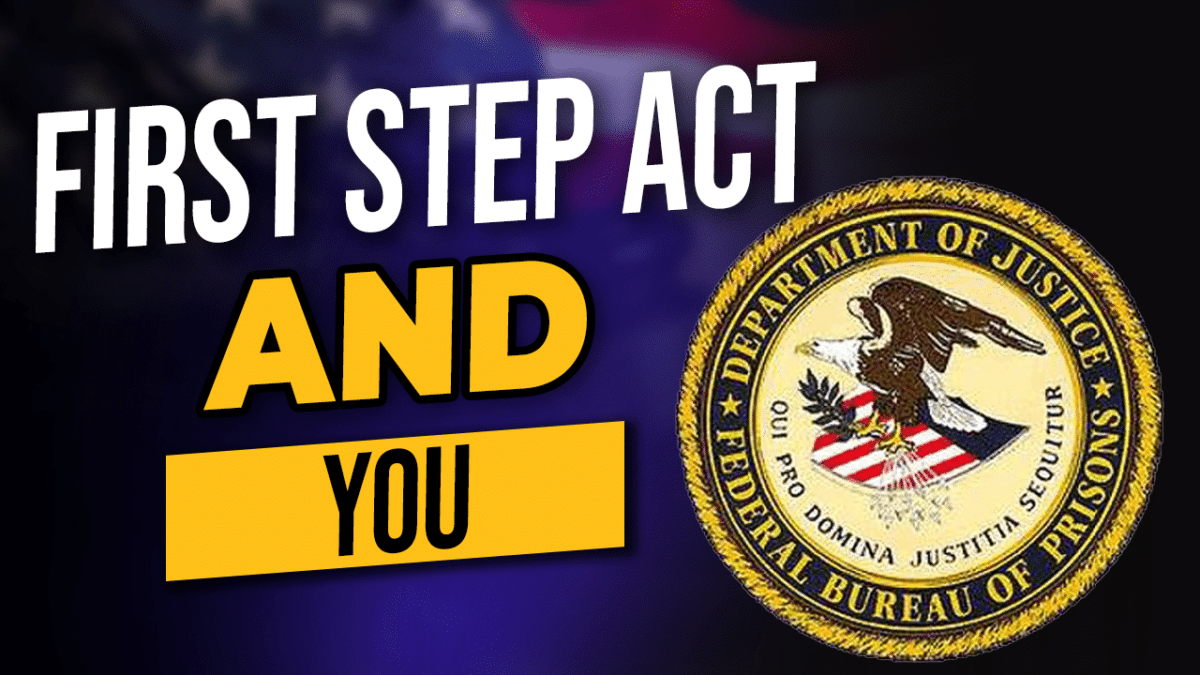‘Dawn of a New Era,’ or More Rhetoric that Doesn’t Match Reality?
A BOP press release is causing quite a stir in the advocacy world. Some individuals with influential voices are heralding it as a change that will free many more people via early, supervised release. “Halfway house bed space is NO LONGER an excuse,” crowed one person on Facebook. “If someone qualifies for [halfway house] or home confinement, they should be placed—period.” But there are lots of reasons to be skeptical.
I can’t say that I blame lay people for their lack of caution, given the triumphalist wording of the press release: “This is the dawn of a new era, one in which the Bureau of Prisons will realize the full potential of the First Step Act (FSA) and Second Chance Act (SCA)…” Specifically, the release stated that SCA benefits and FSA earned-time credits “will be treated as cumulative and stackable.”
The wording sounds like eligible individuals could get transferred to the community a year earlier than their release date under the SCA (although it has always been discretionary) and another year with the accumulation of FSA time credits. But not so fast. An internal memorandum disseminated by the new BOP director on May 28 states that due to statutory limitations in the SCA, individuals who earn the full 365 days of early release available under the FSA cannot get more than 12 months of community placement (RRC or home confinement). Perhaps the press release simply fails to say that while benefits under the two acts can only be stacked up to a year.
First Step Act confusion is one of the more exploited issues in the predatory consulting world. Too many people fall for Google ads or Facebook postings implying that the sponsor can get a loved one out of prison early in return for thousands of dollars. FSA is also misunderstood in the legal community.
The reality: Aside from the early days following the passage of the FSA, very few people who were serving a lengthy sentence have been awarded SCA time stacked on top of earned FSA pre-release credits. In addition to the claimed statutory limitation, there is simply insufficient bed capacity in residential reentry centers (halfway houses) and contract limitations on the staff and equipment required to place more people in home detention. The underfunding crisis developed quickly following implementation of the FSA. (The same shortfall occurred in 2008 after the enactment of the SCA, which is one reason why the potential of a full year of community release was elusive before the FSA.)
With the significant budget deficits and cuts that are in the news, I’d like to know how or where the BOP would obtain the funding to pay private contractors to exceed their pre-set quotas. In fact, the BOP has not been able to place people in RRCs or home confinement even for the time earned under the FSA! And recently, DC’s District Court rejected the argument by the ACLU and its partners that “shall means shall,” ruling instead that the FSA does not compel the BOP to transfer every prisoner to community release on the date of their eligibility.
“Section 3632(d)(4)(C) [of the FSA] is best read as a directive that identifies what group of prisoners the BOP must transfer into prerelease custody, not as establishing an immutable date by which the BOP must effectuate individual transfers,” the judge ruled.
So, unless the ACLU team appeals and wins, or there are other favorable circuit court decisions, I guess “shall” doesn’t mean shall anymore!
A review: It takes about 27 months in prison before an FSA-eligible person begins to earn credits toward a year of early release. Those credits ordinarily accumulate at the rate of 15 days a month, which requires over two additional years to get to the maximum 365. So, that’s 27 months, plus 24 months to hit the statutory maximum community placement under the SCA, as stated in the director’s internal memorandum.
The broader, systemic issue that no one is paying attention to is this: People ineligible for FSA credits due to the nature of their charge and who are most in need of community transition are getting shorter RRC placements because there is a shortage of beds, since they are occupied by lower-risk FSA-eligible individuals.
Readers who have followed my monthly Sentencing Partner articles for the past 10 years know that changes in policy are required to be disseminated as “Change Notices,” according to the BOP’s own policy on directives management. Governing by internal memo or press release lacks rigor and transparency and leads to inconsistency, confusion and exploitation.
Another issue flying under the radar is the fact that once sent into the community, people are not continuing to earn time credits under the FSA. That’s because once a person is transferred to an RRC or HC, there is no way to apply the credits because they are already in the community. Since the BOP is already using its discretion to apply the first 365 credits toward early supervised release, it could also front load all projected credits so they could transition into the community even sooner.








